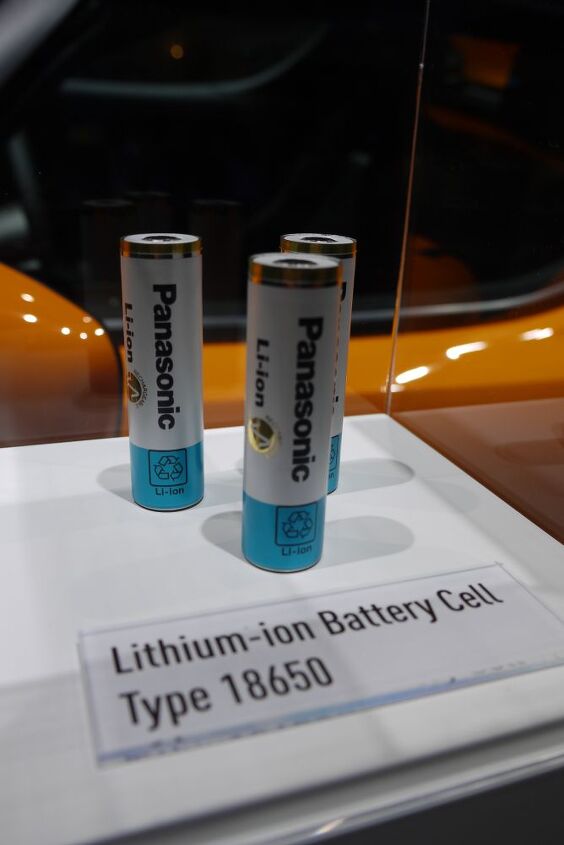Tesla Awards Panasonic 4-Year $7 Billion Battery Cell Contract Anticipating 500% Increase in Production
Tesla Motors has used exclusively Panasonic lithium ion battery cells since it started selling electric cars. 2010 photo.
Panasonic Corp., which already is the largest supplier of lithium ion batteries for the electric car industry, has announced that it has signed a new contract with Tesla to supply battery cells for the Model S and upcoming Model X electric vehicles. The Japanese company will supply 2 billion 18650 form factor lithium-ion cells worth up to $7 billion over the next four years. Panasonic has been Tesla’s exclusive supplier of battery cells since it started selling its first EV, the Tesla Roadster.
Since Tesla has used 200 million cells over the past two years, the contract indicates a significant ramp up of production is planned, a five-fold annual increase. Tesla has said that it expects to deliver about 21,000 Model S cars this year and that the Model X crossover will go on sale at the end of 2014.
More by TTAC Staff
Latest Car Reviews
Read moreLatest Product Reviews
Read moreRecent Comments
- Bd2 If I were going to spend $ on a ticking time bomb, it wouldn't be for an LR4 (the least interesting of Land Rovers).
- Spectator Wild to me the US sent like $100B overseas for other peoples wars while we clammer over .1% of that money being used to promote EVs in our country.
- Spectator got a pic of that 27 inch screen? That sounds massive!
- MaintenanceCosts "And with ANY car, always budget for maintenance."The question is whether you have to budget a thousand bucks (or euro) a year, or a quarter of your income.
- FreedMike The NASCAR race was a dandy. That finish…



































Comments
Join the conversation
2,000,000,000 batteries is about 300,000 Tesla Model S/X thats an interesting ramp from circa 25,000 per year for 2013
Good for Panasonic! Good for Tesla! I am continually-amazed by the capabilities of those Panasonic lithium-Ion batteries. My Dewalt battery-powered drills have them, and they have opened up an entire world of home remodeling and hand man activity that was simply absent from my experience.